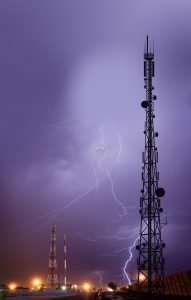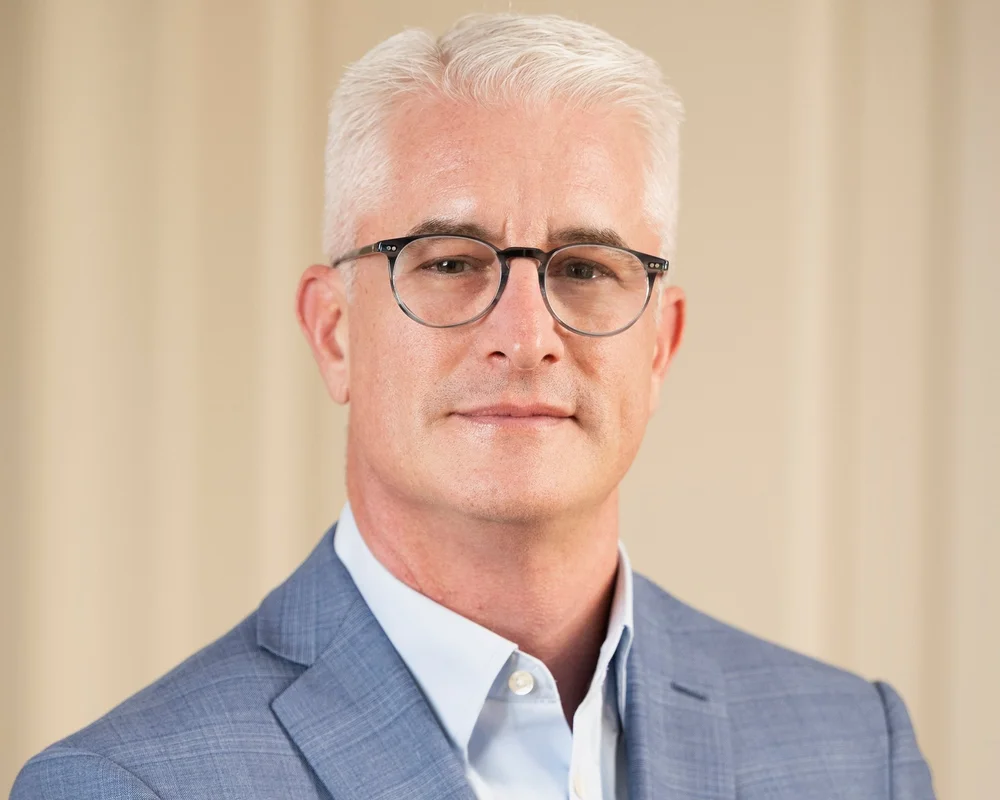This Industry Viewpoint was contributed by Rami Reshef, CEO of GenCell Energy
With the world ready to embrace 5G, many wonder where it will have its greatest impact and which applications will drive its success. Will it be consumers like you and I? Or will it be businesses and industrial applications? While the consumer market will certainly benefit from faster speeds, mobile network operators (MNOs) are targeting much bigger revenue streams from businesses.
Industries and applications that stand to benefit the most from the reduced latency of 5G are expected to be the biggest driver for its adoption. Most notably, users of IoT applications for whom machine-to-machine connectivity and automation can be enhanced to improve efficiency. 5G is expected to usher in automation in manufacturing like never before, creating smart factories that will make processes more efficient and cut costs. According to a study by Ericsson, ‘The 5G Business Potential’, the expected addressable market in 2026 will be USD 113 billion.
The autonomous vehicle industry will also hugely benefit from reduced latency and a significantly more reliable connection achievable via 5G. These cars need to be connected all the time, therefore minimizing gaps in communication are instrumental for the sensors around the car – avoiding loss in data will prevent errors. With 5G the enabler for many other industries and applications that thrive on fast and efficient automation, many MNOs are eager to introduce 5G in order to diversify their businesses.
The 5G OPEX challenge – Energy
 But while revenue increases are expected, the reality is that the deployment of 5G will come at a huge cost to operators. While the CAPEX of rolling out the infrastructure required for 5G will be extremely high, some might be surprised to know that energy costs will create the biggest hole in an MNO’s pocket. Talking to a number of our telecom customers today, energy costs represent around 30% of the total OPEX for operators providing 4G. With 5G, this is expected to double, with more energy required to power existing and new base station sites. Some of the existing 4G infrastructure can be used, but 5G will have a higher frequency, meaning significantly more base stations will be required. As a result, operators will need to invest in much more power to provide 5G coverage to the equivalent-sized 4G area.
But while revenue increases are expected, the reality is that the deployment of 5G will come at a huge cost to operators. While the CAPEX of rolling out the infrastructure required for 5G will be extremely high, some might be surprised to know that energy costs will create the biggest hole in an MNO’s pocket. Talking to a number of our telecom customers today, energy costs represent around 30% of the total OPEX for operators providing 4G. With 5G, this is expected to double, with more energy required to power existing and new base station sites. Some of the existing 4G infrastructure can be used, but 5G will have a higher frequency, meaning significantly more base stations will be required. As a result, operators will need to invest in much more power to provide 5G coverage to the equivalent-sized 4G area.
This is causing a major headache for MNOs, and these concerns were recently brought to light in an in-depth research survey released at MWC 2019 by Vertiv and 451 Research. The survey found that 90% of operators were concerned about rising energy costs and are seeking technologies and services that are energy-efficient. Combined with the ever-growing global pressures and regulations to reduce their carbon footprint in the fight against climate change, more and more operators are exploring green power alternatives to tackle these challenges head on.
Perhaps one of the boldest moves of all was that of T-Mobile in the USA, who committed to using 100% renewable energy across its business by 2021. In addition, Vodafone announced that it would fulfil the same pledge by 2025. Other industry giants have made similar moves, with Telefonica and Verizon announcing they will use renewable energy sources for 50% of their total electricity by 2020 and 2025 respectively.
So, what’s the common thread here? Reduced costs? Improved sustainability? Or is it a move to increasing the stability of the power to the network? The answer – all of the above.
The green power alternatives
With the huge increase in the number of base stations required to operate the 5G network, MNOs are exploring low cost renewable sources, such as wind and solar, to help reduce their energy bills. According to the International Renewable Energy Agency, certain land-based wind and solar sources are set to deliver electricity for $0.03 per kilowatt-hour (kWh) this year, much lower than the current cost of power from fossil fuels, which ranges from $0.05 to $0.17 per kWh. Such cost-efficiencies have been key drivers in renewable adoption by operators, with T-Mobile CEO John Legere recently stating that he expects to cut the company’s energy costs by around $100 million in the next 15 years by moving to 100% renewable.
But wind and solar have their limitations. Firstly, they are reliant on Mother Nature and therefore cannot be deployed as an independent source of continuous power. Instead, they are used as a supplement to grid power and/or as a component in a hybrid solution that can store and supply energy from other sources when the sun or wind are not producing power. To this end, large-scale batteries are employed to store the energy generated. As these batteries have a limited lifespan, typically diesel generators are also deployed to provide backup power to each battery. Some downsides of this hybrid set-up of renewables, batteries and diesel generators, are that polluting diesel causes carbon emissions and batteries must be regularly replaced.
For decades, hydrogen fuel cells have been touted as a great source of energy and many have been deployed in telecom. They are a non-weather-dependent, clean source of electricity with a level of reliability used to power the Apollo and Mir space missions, as well as having energy storage capabilities. What has prohibited their mainstream use to date is quite simply – cost. However, recent advances in the technology, as well as in the hydrogen infrastructure, have seen the CAPEX and OPEX of fuel cells decrease quite significantly. This has led to a rise in interest from MNOs and tower management companies in the technology, particularly to power networks in poor grid areas.
This is exemplified by leading operators, who have adopted our G5 fuel cell solution to provide backup power to a number of 4G base stations in poor grid areas to replace their existing batteries and diesel generators. In the event of an outage, the fuel cell kicks in immediately and provides long-duration power to keep critical points operational, ensuring uninterrupted tower operations.
When it comes to 5G, the stakes are much higher. When you’ve got IoT-driven automated production lines that require super-high latency from 5G, the network simply cannot go down. If the network fails for a second due to poor grid power, production lines would halt, business would be lost, and someone would need to be liable. You can be sure that if this type of business pays an MNO every month for highly-reliable, high-latency 5G, should any losses be suffered as a result of the network going down, the operator would be held responsible. This is where the use of ultra-reliable fuel cells to backup critical points across the network could safeguard against power loss and associated damages.
When it comes to utilities who have the unenviable task of finding the necessary power to support the huge energy demand of 5G – today’s grid faces tough challenges. As mentioned previously, for 5G there could be ten times the amount of base stations needed than for 4G – all of which need a significant amount of energy. Add all the other power-hungry applications that are growing, such as electric vehicles, data centers and IoT industries, and utilities will be facing a major energy gap to fill. Adding renewable power sources to supplement and support the grid in peak demand situations and in poor grid areas can be a game-changer for both utilities and mobile operators alike.
New revenue streams for operators
One way that renewables help MNOs cut energy costs is through their relatively low and stable prices in contrast to electricity prices from utilities; therefore we read more and more frequently about MNOs investing in solar and wind farms to benefit from their lower energy costs. These investments will prove even more beneficial in the future, as the energy economy moves to a distributed model in which a company can be both an energy consumer and an energy producer. This new “distributed grid” model is already operating in California and is becoming increasingly common around the world.
In the future when MNOs will require even more power for 5G, at certain times of day and in certain dense urban locations – when energy demand is at a peak and the rate for purchasing power from the utilities is highest – by accessing alternative sources of renewable power, operators can reduce their own energy expenses and even generate revenues by selling energy back to the utility. These alternative power sources include solar and wind, and when these sources are not available, such as at night or when there is no wind, batteries and fuel cells will kick-in. Where base stations are situated in cities with high power demand and have noise and space constraints, fuel cells are the optimal complementary backup solution for grid power.
 The advent of 5G will not only drive operators to diversify to serve many new applications, such as autonomous vehicles and IoT applications, but will also demand that they expand their energy sources for optimal power generation – supplementing the power from the grid with a variety of green technologies. Leveraging the advantages of solar, wind and fuel cells will allow MNOs to reduce their energy expenses while successfully meeting the steep power demands of 5G.
The advent of 5G will not only drive operators to diversify to serve many new applications, such as autonomous vehicles and IoT applications, but will also demand that they expand their energy sources for optimal power generation – supplementing the power from the grid with a variety of green technologies. Leveraging the advantages of solar, wind and fuel cells will allow MNOs to reduce their energy expenses while successfully meeting the steep power demands of 5G.
If you haven't already, please take our Reader Survey! Just 3 questions to help us better understand who is reading Telecom Ramblings so we can serve you better!
Categories: Energy · Industry Viewpoint · Wireless






Discuss this Post